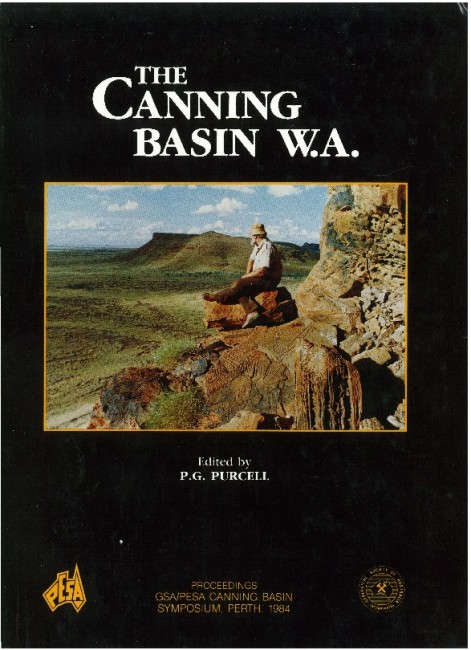Publication Name: The Canning Basin, W.A.
Authors: P.R. Lehmann
Date Published: December 1984
Number of Pages: 36
Reference Type: Book Section
Abstract:
Devonian reefs provided much of the early incentive to Canning Basin explorers. Extensive studies of the Devonian Reef Complex in outcrop, related by analogy to the very productive time equivalent reefs in Canada produced great expectations for the reef complex in the subsurface.The results of exploration up to 1980 were disappointing. The Pillara Formation (Givetian to early Frasnian) at the base of the reef complexes had been encountered in 14 wells with only minor hydrocarbon shows and interest in carbonate objectives waned. The 1981 Blina discovery in the upper part of the reef complex rejuvenated this interest, but subsequent drilling failed to find any new fields. With the 1982 discovery of the Sundown oil field, Permo-Carboniferous ,sandstones became an additional target for future exploration in the Canning Basin.
Drilling in the W .M.C. and ESSO operated permits during 1981-1983 produced sufficient encouragement to suggest that dismissal of the Pillara play is premature. Pillara reefs have excellent potential in several areas in
the Canning Basin where they are at optimum depths and well defined seismically. They have a high probability
of secondary porosity development and vertical seals can often be inferred from seismic. A persistent shaly interval within the Pillara Formation is named the Beagle Bay Member and forms a potential regional seal.
The Worral Formation of possibly Early to Middle Devonian age is named and four members are recognized and correlated with the lower part of the Poulton Formation. Possible Worral Formation carbonate buildups and ?reefs (up to SOOm) are defined seismically and could be future objectives, particularly in WA-109-P.
The ?Lower Devonian Carribuddy Formation is raised to group status, and the informal W APET units 'A' to 'E' are given formation names with their type sections in Kidson No. 1. Potential Carribuddy group carbonate reservoirs and ?reefs occur, or can be predicted in some areas of the Canning Basin.
A number of sandstone intervals in the Lower to lower Upper Devonian section have exploration significance. The Frasnian to Givetian sandstones on the Lennard Shelf have been poor reservoirs to date. However, the andalgoo/Poulton/Worral sandstones are the best pre-Carboniferous clastic reservoirs in the Canning Basin and have potential in favourable structural/ stratigraphic situations.
The widespread thin shale underlying the Pillara Formation is named the Dominic Shale and together with the Tandalgoo and Worral Formations comprise the Tanndulla Group. The Weedong and Anna Plains Sandstones, and the May River Conglomerate are named as formations on the Lennard Shelf that correlate with the upper part of the Tandalgoo Formation.


